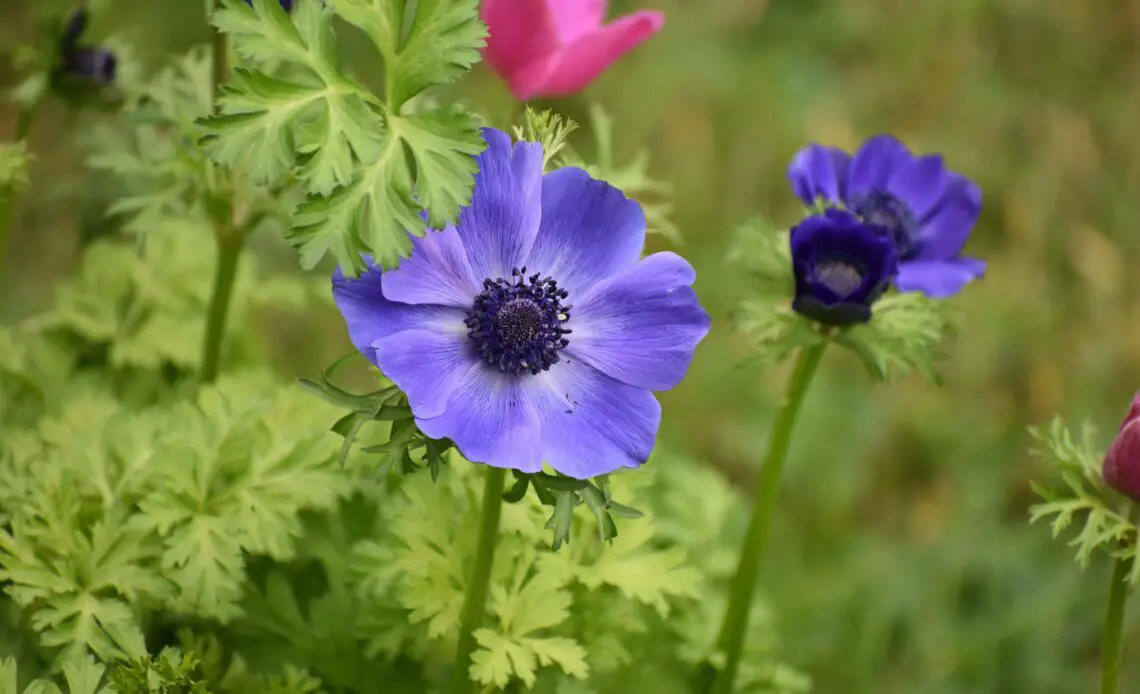
The anemone flower hails from the family of Ranunculaceae, which popularly houses buttercups. There are over 120 species of the anemone flower. They are native to all regions in the temperate and subtropical areas, especially in North America, Europe, and parts of Asia. The only exceptions to this are Antarctica, New Zealand, and Australia.
They were named by the Swedish botanist Carl Linnaeus in 1753. Etymologically, the word “anemone” originates from the Greek derivation “anemos,” which means “wind,” and the suffix “one,” which means “daughter of.”
In Greek mythology, the daughter of the wind god is called Anemone, and thus these flowers are more colloquially known as windflowers. Their petals are so gentle that they can be swayed open and closed by the wind.
One species, the Japanese anemone flower, is a flowering plant in the genus Eriocapitella x hybrida. It is native to Asia. It is found in the Eastern Himalayan region of Assam, Nepal, and Tibet; in East and Southeast Asia, China, Taiwan, and Myanmar.
The biological name of the Japanese anemone flower, Eriocapitella Hupehensis, refers to its place of origin. The name Hupehensis means “from Hupeh” or Hubei province, China. The Chinese call this flower “da po wan hua hua,” meaning “broken bowl flower.”
What does the Anemone flower symbolize?
The love symbolism of the anemone bloom is powerful. Due to its stories, the love that this flower symbolizes is lost or forsaken love.
The anemone flower is inextricably linked with the Greek myth of Adonis and Venus, the goddess of love. Various iterations of the myth see Adonis dying in the arms of Venus after being attacked by a wild boar. In a bid to save him, she seals his wounds with nectar, but she is too late, and his soul departs to the underworld.
In a fit of grief and rage, she turns her back on love and curses it, the domain over which she reigns. Anemone flowers are believed to have sprouted from the drops of her lover’s blood that spilled to the ground.
Another version of the myth says the flowers burgeoned from her tears. The powerful act of Venus abandoning love and ridding the world of love when her beloved no longer exists is a symbol of doomed and forsaken love. The anemone flower symbolizes a love that refuses to be forgotten. It also has other connotations.
According to legend, the anemone flower symbolizes terrible luck in love and represents a new beginning. Anyone who carries this flower is believed to have been deserted by their loved ones due to death. But another belief holds that anemone provides new hope because it blooms in the spring and floats in the air.
Anemone was used as a death symbol during the ancient Victorian era, similar to Greek mythology. People believed that this flower brought bad luck and caused broken hearts.
In Chinese and Egyptian traditions, anemone symbolism has had no positive connotations. Since the hue of an anemone represents illness, people believe it brings lousy omen, illness, and other negative health-related consequences.
In contrast to the popular belief in the East, Europeans regard anemone flowers as a protecting quality against bad luck, illness, and symptoms. The flower symbolizes good fortune and a protective shield against evil spirits.
The most noteworthy symbolism of the Japanese anemone flower is anticipation. The way the flower always closes up at night and re-opens in the morning symbolizes anticipation for something to happen or arrive. There is another legend attached to the closing and opening of the flower. Fairies are believed to hide inside the anemone flower’s sepals and close them up if rain comes down.
All in all, the anemone flower symbolic meanings are:
- protection
- anticipation
- undying or forsaken love
- hope
- new beginning
- fragility
- illness
Meaning of the Anemone flower colors
Blue color
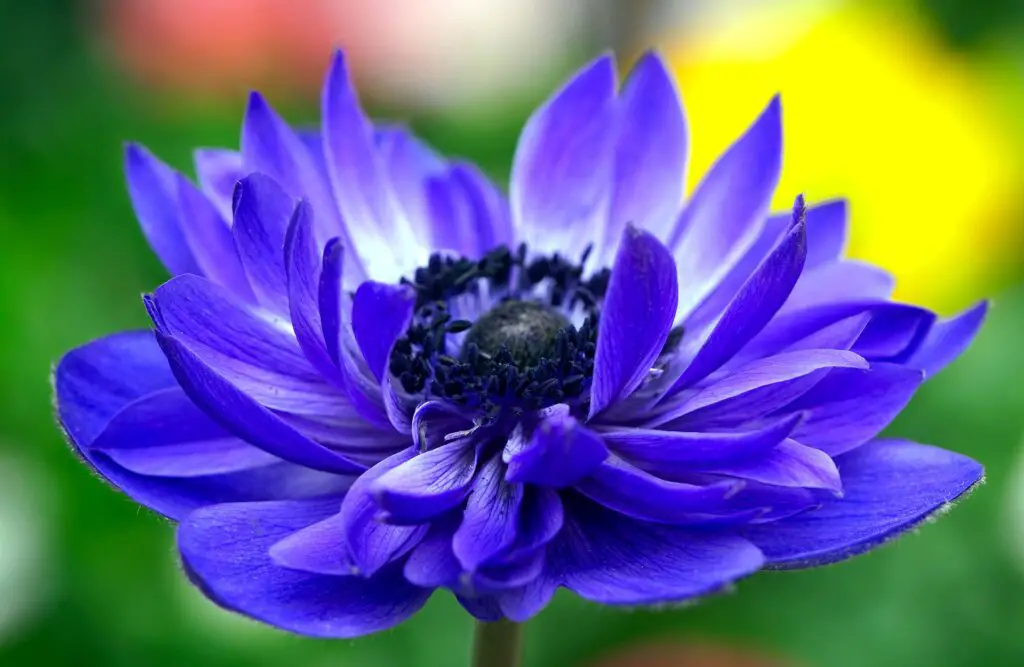
Blue is a color that represents authority, trust, and intelligence. You can give a bouquet of blue anemone flowers to someone you care about and who you have been waiting to see.
The blue anemone flower is expressed as protection against all ills about to occur to you. They are a good flower to give to people you care about when they embark on an important journey. They also denote love, wisdom, and trust.
This blossom symbolizes beloved ones’ regard and affection. In a larger sense, the blue anemone also represents anticipation, which links to the flower’s budding character.
However perplexing as it may seem, the darker blue anemone believes in bringing illness and representing deserted love. Provides power against certain difficulties.
Red color
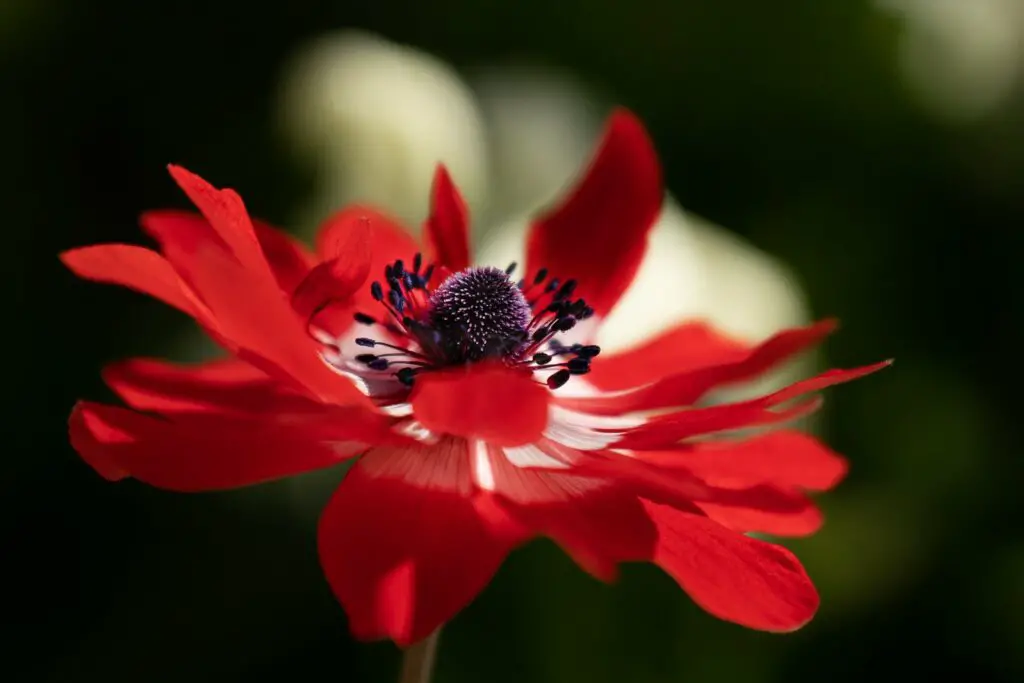
The red anemones are popularly linked with the Greek myth of Venus and Adonis. It depicts alone, forsaken love, and the death of a person we love. They show undying love and devotion to your partner, even in death. They are the ideal flowers for your lover or spouse.
The Christian culture provides another significance and metaphor for the red anemone flowers. The red flowers are a reminder of Jesus’ blood spilled on the cross. According to the two stories about red anemones, the bloom represents the demise or the departure of dear ones (forsaken love).
The color is also associated with romance and love. These tiny flowers can make a lovely addition to your Valentine’s Day bouquet, and you can also pick them and use them to give color to your home. As these are soft flowers, red can also symbolize aggression and force, but you don’t have to worry about delivering the wrong message.
Yellow color
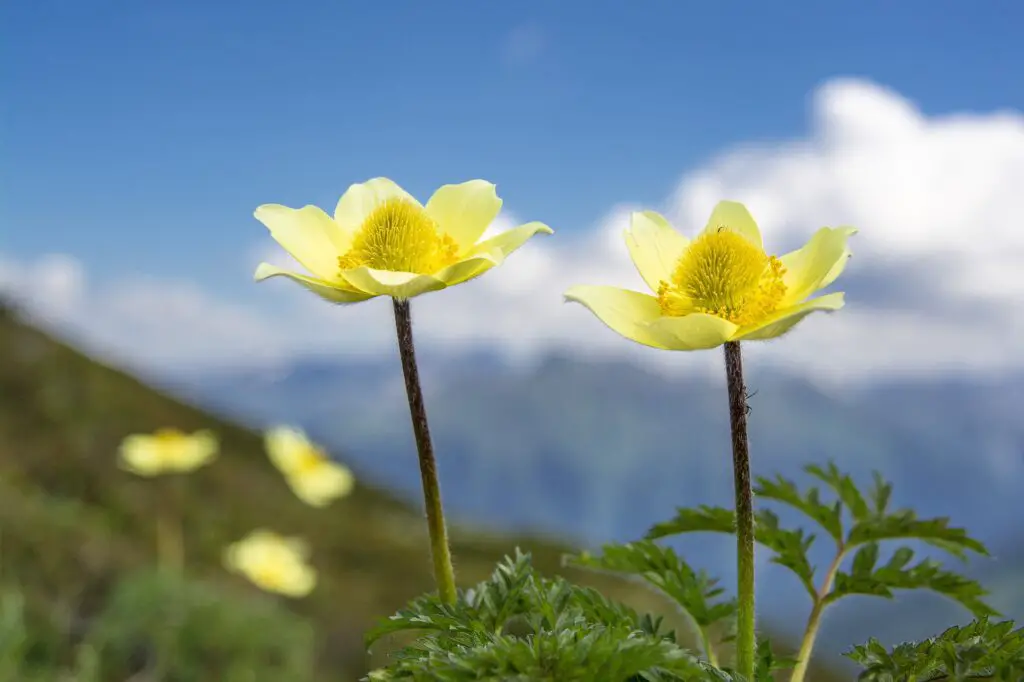
Yellow is a color of feelings of happiness, excitement, and optimism. The yellow anemone flower can be given to practically anyone you wish to see, pleased or in a good mood.
These golden blooms symbolize personal growth, wealth, and success in Asian cultures. Their sunny personality makes them an apt choice for giving some cheer to people you love.
These flowers are ideal for planting in your entryway or garden, as the brilliant yellow color will bring a smile to your face whenever you see them.
Pink color
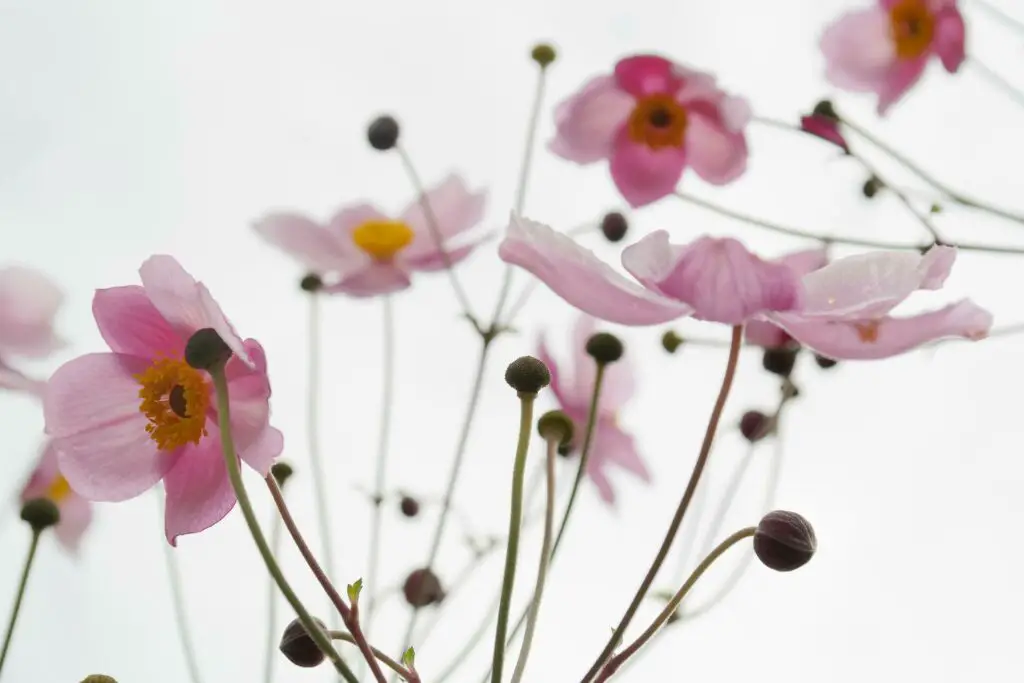
Pink is a color associated with tenderness and romanticism. Anemone flowers are lovely and peaceful and can be presented to someone you adore and respect. These gorgeous flowers make beautiful decorations for weddings and the back of your garden.
Pink anemones are known for their delicate beauty and are versatile flowers that can be given to anyone. They are perfect as anniversary gifts, baby shower arrangements, or cut flowers for the vase.
The pink Japanese anemone flower symbolizes a forsaken love or death.
White color
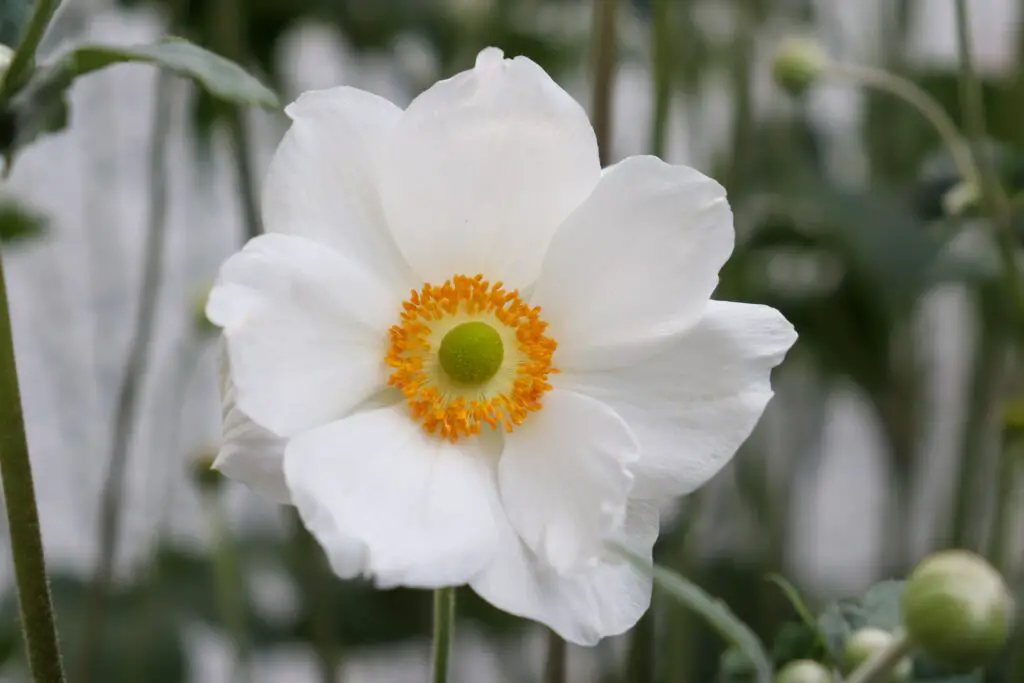
Some ancient traditions in Greece and China associated the white anemones with demise, but modern Western cultures have applied an optimistic and cheerful meaning to the flower.
The white anemone is typically connected with innocence and truthfulness because of its color. The exquisite appearance of the white flower also has a calming and soothing effect on those who see it. Conversely, the white anemone is most probably associated with death and poor luck in Eastern culture and is even used in funerals.
White anemone flower meaning has been associated with spirituality and purity. This color is widely used in funerals, especially in Asian cultures. The white anemone flower was often used during funerals to pay last respects to those who had died because of its symbolic meaning. Besides its symbolic meaning, white is a neutral hue offered to almost anyone, although it is always a good idea to consider its symbolic significance.
The white Japanese anemone flowers are very delicate in their appearance. They symbolize sincerity and fragility.
Purple color
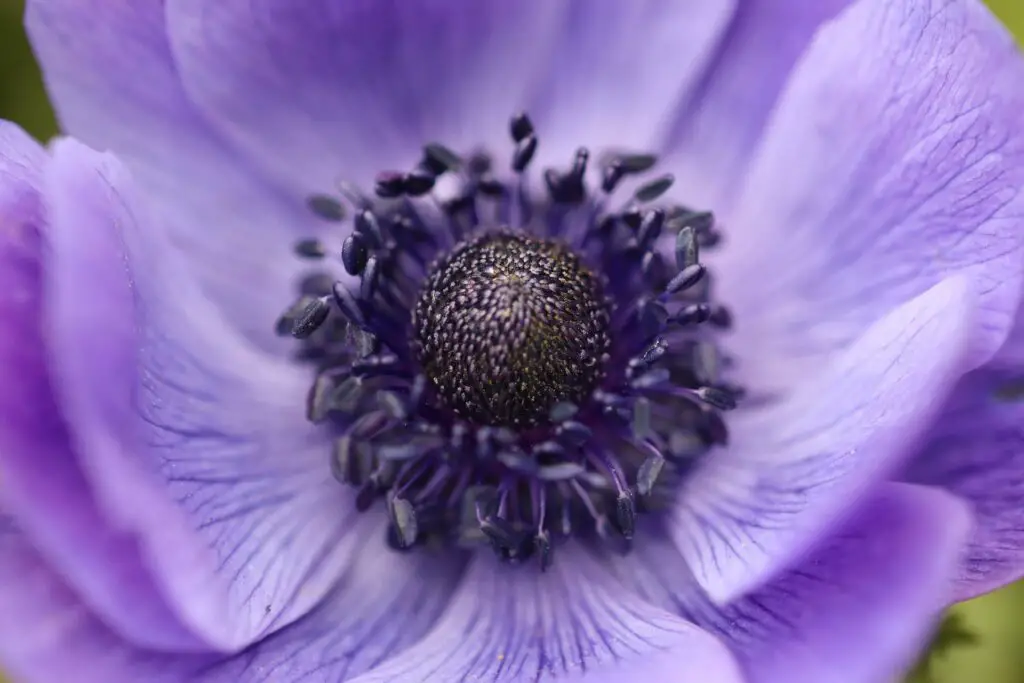
Purple is a hue associated with monarchy and wealth. While portrayed as a metaphor for anticipation, the purple anemone bloom exudes luxury and extravagance. If you have terrible thoughts, purple anemones can cast away the darkness or a negative omen. When you send a bouquet of purple anemones to anyone you’ve been waiting to see and chat with, it’s thought to have a favorable influence in contemporary society.
Purple is often associated with honor, nobility, beauty, and status. The purple anemone bloom is undoubtedly more lavish and intriguing. In some cultures, the purple anemone flower is associated with excitement. You can keep these symbolic meanings in mind while giving this flower as a gift! You can provide a gorgeous arrangement of anemone flowers to someone you’ve wanted to meet and chat with, and now you can.
The purple Japanese anemone flowers are believed to ward off ill wishes. They symbolize protection against evil.
Interesting facts about the Anemone flowers
- Famous French painters like Monet and Matisse were inspired by the different colored anemones and made them the subject of their paintings during the Impressionism movement.
- Anemone flowers are known for their mildly toxic nature; no part should be consumed directly. They are still used after detoxification for their anti-inflammatory and antimicrobial qualities.
- It has been used in homeopathy for treatments like period-related and stomach-related pain, nausea, and arthritis. Ancient Romans extracted the essence of the anemone flowers to treat wounds and fever.
- In medieval England and Ireland, it was believed that the anemone petals closed at night to protect the fairies that were resting inside. Peasants also carried them to keep negative energy and diseases at bay.
- Red anemones are among the most famous blossoms for marriage preparations, especially centerpieces and bouquets, even though they only survive 2-3 days as fresh flowers.
- The Japanese anemone, which blooms in the fall, is the most famous anemone species.
- The Japanese anemone flower is native to China, not Japan, despite its name. In China, the Japanese anemone flower has existed, at least, since the 17th Century.
- The two cultivars of the Japanese anemone flower, Eriocapitella Hupehensis ‘Bowles’s Pink’ and Eriocapitella Hupehensis ‘Hadspen Abundance’ have received the Award of Garden Merit from the Royal Horticultural Society.
- There is very little to no fragrance in Japanese anemone flowers.
How to grow Anemone flowers
This annual blossom’s growth is relatively easy, and the anemone flower is easy to care for.
- Plant anemones in moist, well-drained soil.
- Place them in areas that receive full sun.
- Water slowly to keep the soil mildly moist and allow it to absorb as much water as possible.
How to care for Anemone flowers
- Once established, water them regularly to keep the soil consistently moist.
- Deadhead as needed to encourage new growth.
- Lay down a blanket of mulch in the fall to prevent frost and protect your plants from the cold.
Best time to gift Anemone flowers
Since the anemone flower’s meaning differs from culture to culture, the occasions during which they can be gifted also differ. Typically though, they make a great choice for gifting to people you cherish, trust, respect, and admire.
The purple blooms can be given to wish someone good luck or a happy journey. In Asia, white anemone flowers are ideal gifts for funerals. In the West, yellow flowers make a good thank-you gift, and pink ones can be used in wedding arrangements. The red anemones can be given to your paramour on important dates.
Utilizing the broad spectrum of colors and meanings of the anemone flower will help decide to whom and when to give these multicolored beauties.
As a late bloomer, the Japanese anemone flower gets to put on a stunning show when almost all the flowers stop blooming. This flower makes a perfect gift during a marriage or the birth of a baby. Gifting a bouquet of Japanese anemone flowers as a get-well or good-luck gift conveys the message of wishing for better times.
Conclusion
The anemone flower is tricky, with hundreds of different meanings and symbolism. It is usually associated with protection from ill will and evil but can also represent forgotten love. It might represent anticipation or be used to remember a deceased loved one.
This flower has various, more debatable meanings. When the petals of this flower close, it indicates that rainfall is approaching. It can also represent the coming of the first round of spring breezes.
As a result, although some consider the anemone a protective warning against disease or calamity, others regard it as a bad omen.
If you want to know and learn more about flowers, we at PansyMaiden can help you. Check out our fun, easy-to-read, and informative flower-related content that you will surely enjoy!
